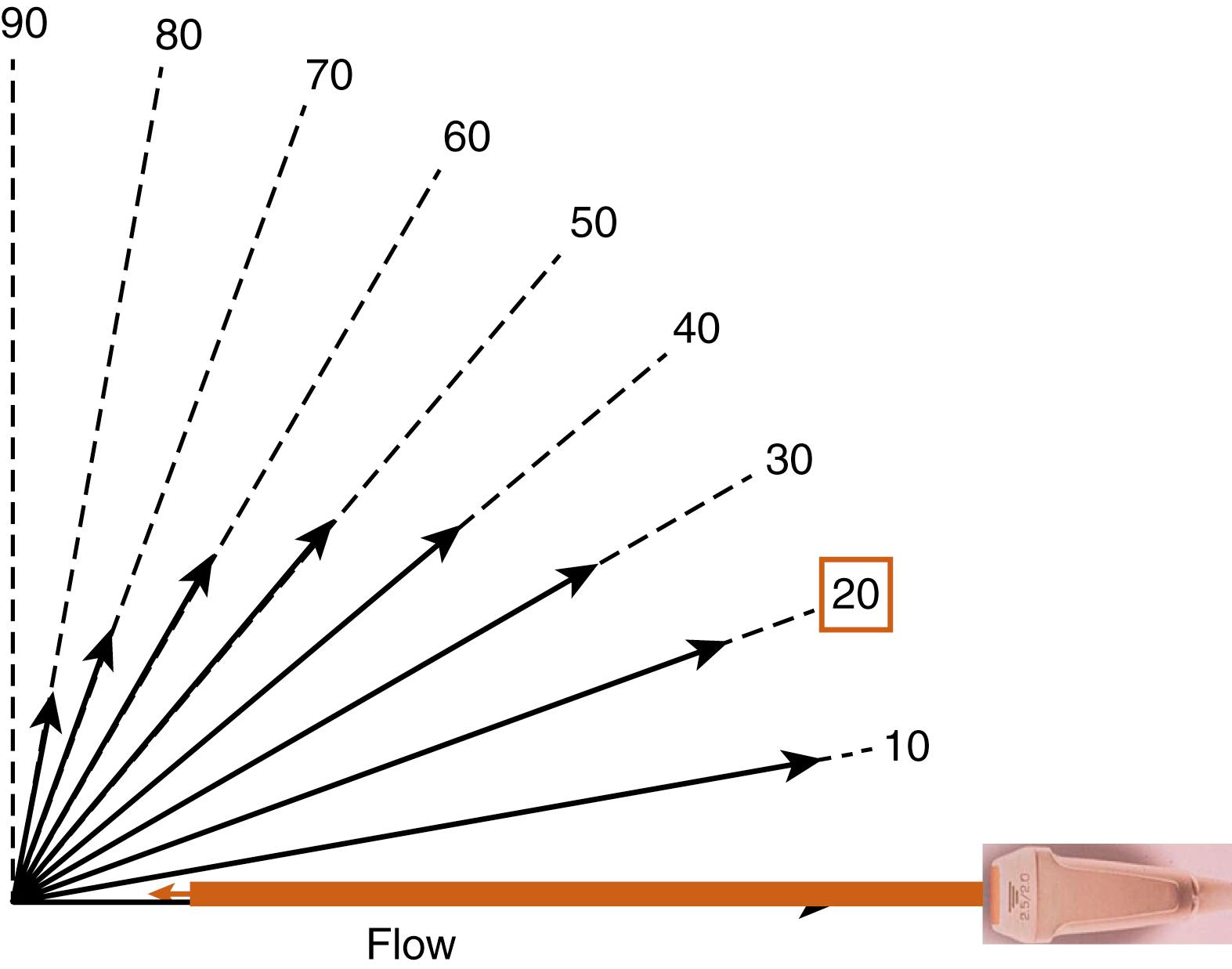Physical Address
304 North Cardinal St.
Dorchester Center, MA 02124
Echocardiography provides noninvasive, real-time, diagnostic cardiac anatomic imaging (see Chapter 1 ) and motion and flow information. In the present context, the motion and flow are myocardial motion of contraction and relaxation and the resulting flow of blood, respectively. Motion and flow information are provided by implementing the Doppler effect.
The Doppler effect is a change in frequency caused by motion of a sound source, receiver or observer, or reflector. If a reflector is moving toward the source and receiver (the ultrasound transducer in our context), the received echo has a higher frequency than would be experienced without the motion. Conversely, if the motion is away (receding), the received echo has a lower frequency. The amount of increase or decrease in the frequency depends on the speed of the reflector motion, the angle between the sound propagation direction and the motion direction, and the frequency of the wave emitted by the source. The change in frequency (difference between emitted and received frequencies) caused by the reflector motion is called the Doppler-shift frequency or, more commonly, the Doppler shift (f D ). The Doppler shift is equal to the received frequency (f R ) minus the source frequency (f T ). For approaching reflectors (e.g., blood cells in circulation), the Doppler shift is positive; that is, the received frequency is greater than the source frequency. For a receding reflector, the Doppler shift is negative; that is, the received frequency is less than the source frequency. The proportional relationship between the Doppler shift and the reflector speed (v) is given by the Doppler equation:
in which c is the sound speed in tissue and θ is the Doppler angle, the angle between the sound beam direction and the motion direction. Take, for example, a source frequency of 5 MHz, an approaching flow speed of 50 cm/s, a propagation (sound) speed of 1.54 mm/μs in tissue, and a zero Doppler angle (cos = 1). The blood is approaching the source, so the received frequency is greater than the source frequency, with a positive Doppler shift of 0.0032 MHz or 3.2 kHz. For flow away from the transducer, the Doppler shift is −3.2 kHz. The Doppler shift is what the instruments described in this chapter detect and measure. The fact that the Doppler shift is proportional to the blood flow speed explains why the Doppler effect is so useful in medical diagnosis. Doppler operation measures the Doppler shift. The myocardial motion and blood flow are what interest us. The measured shifts are proportional to tissue or flow speed, which is the information we seek. Doppler shift is measured by the instrument and the Doppler equation is solved to yield calculated flow-speed information. Tissue Doppler is described in Chapter 4 .
If the direction of sound propagation is parallel to the flow direction, the maximum Doppler shift is obtained. If the angle between these two directions ( Fig. 3.1 ) is nonzero (nonparallel), lesser Doppler shifts will occur. Half the original Doppler shift occurs at an angle of 60 degrees. No Doppler shift occurs at 90 degrees. The Doppler shift depends on the cosine of the Doppler angle as shown in the Doppler equation. Estimation of the angle is done by orienting an indicator line on the anatomic display so that it is parallel to the presumed direction of flow. This is a subjective operation performed by the instrument operator. In much echocardiographic work (e.g., apical view with flow from atrium to ventricle), the Doppler angle is 20 degrees or less, and angle incorporation can be ignored. In that case, the instrument assumes an angle of zero, and the error in calculated flow speed is a 6% or less underestimation of the flow speed.

Become a Clinical Tree membership for Full access and enjoy Unlimited articles
If you are a member. Log in here